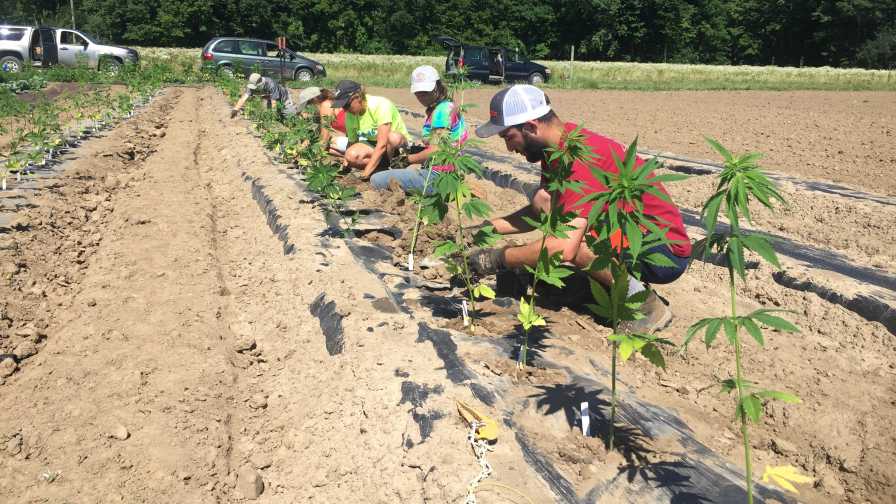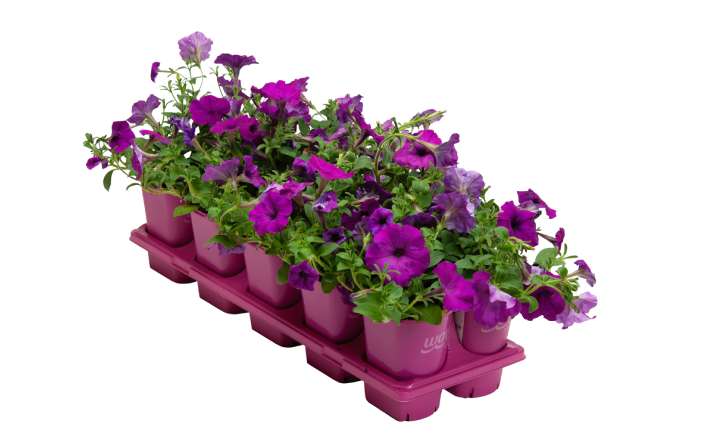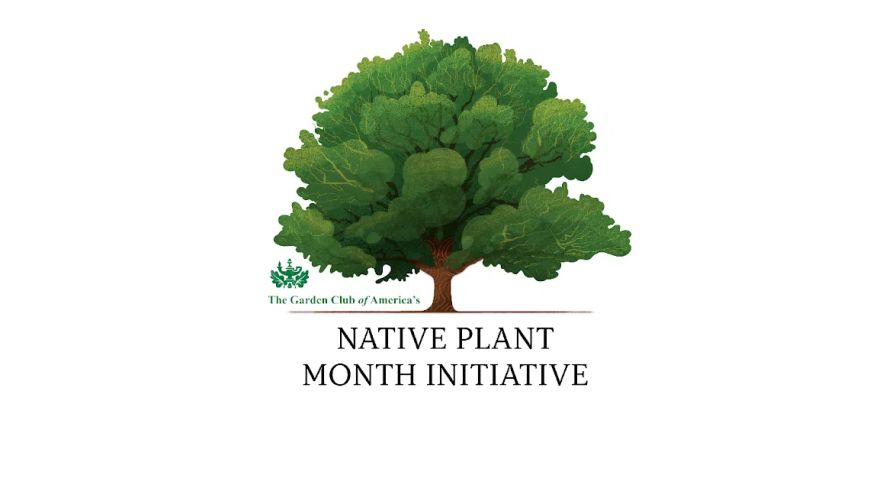Reduce Your Risks When Growing Hemp

Students and technicians in Larry Smart’s lab plant a CBD hemp trial at Cornell University in 2018.
Photos by Lawrence B. Smart
Farming is a risky enterprise — crops and revenues can be impacted by factors that cannot be predicted or controlled. While the weather, pest and disease outbreaks, and market fluctuations are always causing some level of chaos, the consistency of seed lots and reliability of cultivars is something that growers have come to expect in reducing their risk.
For hemp growers, there is the added peril of crops accumulating too much THC (tetrahydrocannabinol) and exceeding the regulatory limit of 0.3% by dry weight. The hemp industry is so new in the U.S. that growers cannot always rely on consistent standards for seed quality or uniform and stable cultivars.
Genetics, Not Environment, Trigger Lack of Uniformity in Hemp Cultivars
One of the early goals in our hemp research program at Cornell University is to help reduce the risks to hemp growers by improving our understanding of cannabidiol (CBD) and THC production, characterizing the pest and disease pressures, and breeding new cultivars that will produce stable and consistent yields — giving growers the tools to better manage their production and profits.
In our first year of field trials of hemp for cannabidiol in 2018, we learned by the end of the growing season that many of the seed lots we received for evaluation were not uniform for low levels of THC production. By analyzing the cannabinoid profiles of individual plants in our trials at the Cornell research farms in Geneva and Ithaca, NY, it became clear that the primary cause for this lack of uniformity was genetics, not environment. Jacob Toth, Cornell plant breeding graduate student and first author of a paper recently published in Global Change Biology – Bioenergy, set out to develop a rapid molecular genetic assay that could be used to predict the levels of THC production by the plant.
A number of research studies have established that based on the arrangement of genes for THC production, Cannabis sativa plants fall into three groups also known as chemotypes: chemotype 1 has high THC and low CBD; chemotype 2 plants have approximately equal ratios of THC to CBD; while chemotype 3 plants have high CBD and low THC accumulation. Hemp growers expect their plants to be universally chemotype 3 since the THC levels in chemotype 1 or 2 plants typically exceed the 0.3% limit and are legally classified as marijuana. The rapid genetic assay that Toth developed easily distinguishes plants of the three chemotypes using DNA extracted from a small piece of leaf.
Rapid Genetic Assay Could Help Rule Out Hot Hemp
In our 2018 trials with 217 plants, only 150 had the genetic makeup characteristic of true chemotype 3 hemp. The results of the genetic test correlated well with the THC and CBD ratios we determined at the end of the season, and the chemotype ratios were not significantly affected by site conditions. All of the 67 plants that failed the genetic assay for hemp produced total THC concentrations above the 0.3% limit. For a grower with a seed lot like this in their field, the results would be disastrous, since sampling and testing conducted by state regulators most likely would have come back “hot” as non-compliant for THC. This scenario was repeated in 2019 for a commercial variety we included in our trials that had a high proportion of plants that failed the genetic assay for low THC genes and resulted in overall non-compliant tests at the end of the season.
The rapid genetic assay that Toth and colleagues designed will be a boon to hemp breeders and seed producers and couldn’t come at a better time as interest in hemp has boomed in the last few years. Breeders can detect the presence of genes for high CBD/low THC production in their lines and ensure that the progeny will be uniformly compliant. The assay can be done using leaf tissue collected from seedlings long before the plants have flowered and in either male or female plants. Male flowers make very little total cannabinoids, so this assay allows breeders to select the correct genetic makeup of the parents even in males that do not express the trait.
The Cornell University hemp research team continues to study the genes that control important traits in hemp with the aim of developing molecular assays for early selection in breeding programs. We are particularly interested in the genes that determine day neutral or daylength sensitive flowering, disease resistance, control of seed shattering, high cannabinoid accumulation, trichome abundance, and minor cannabinoid accumulation. As we expand our collection of genetically diverse hemp germplasm, the genetic variants for those traits give us a string we can pull to unravel the genetic underpinnings of hemp biology and expand our knowledge base to de-risk the hemp cultivation business.









